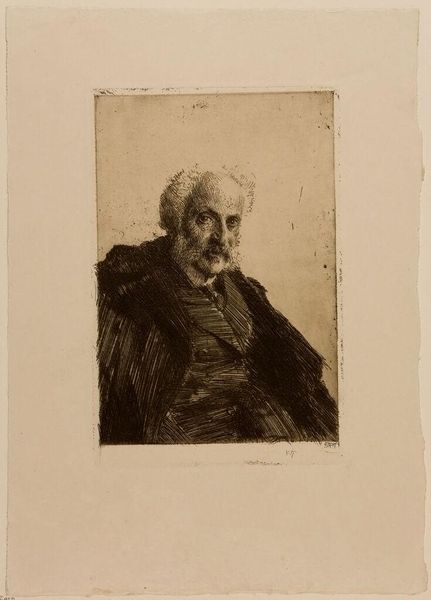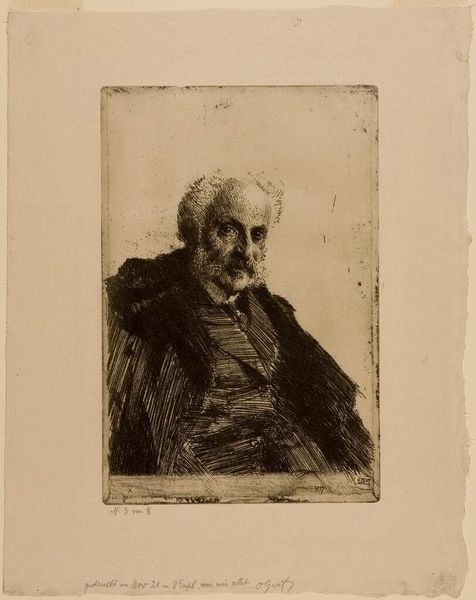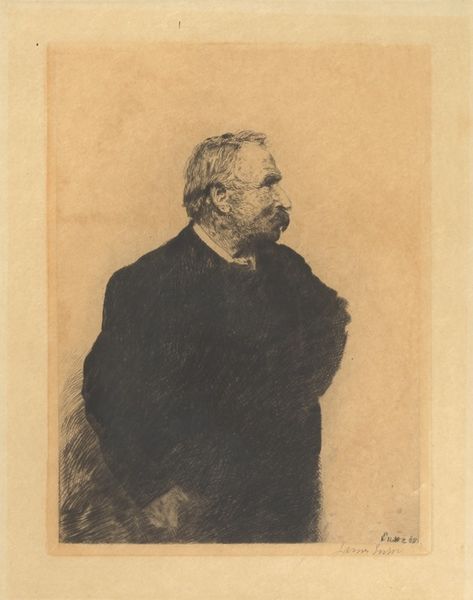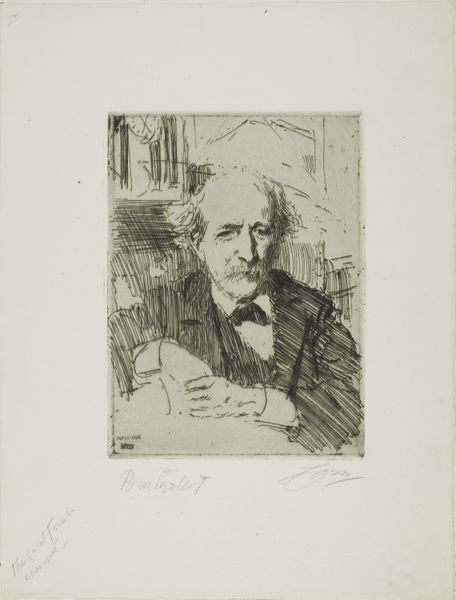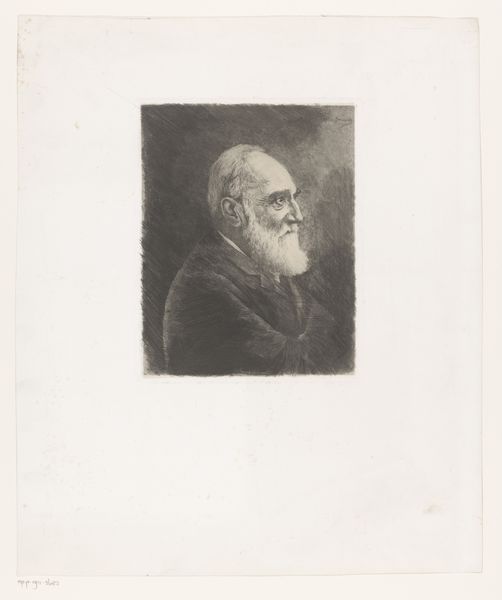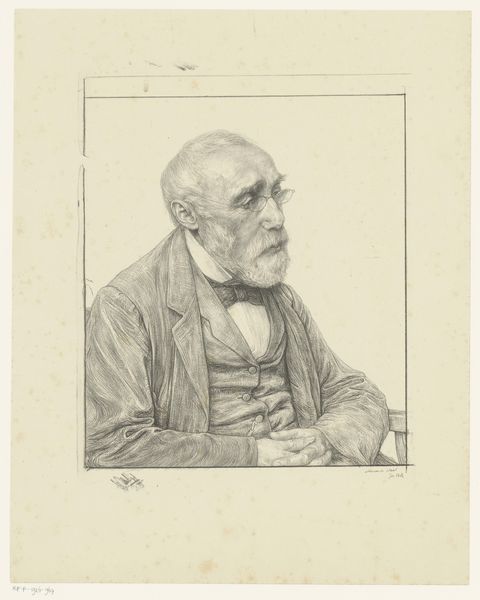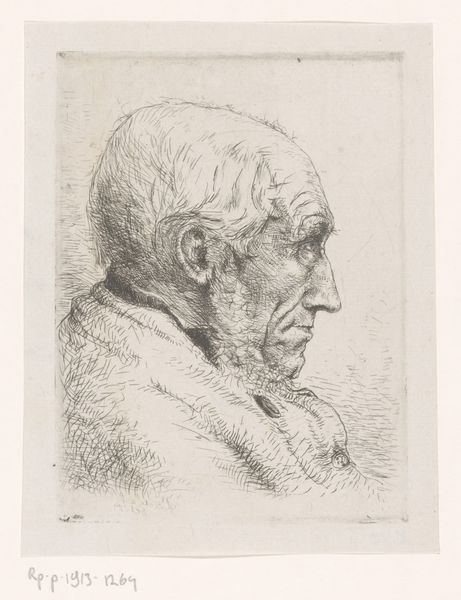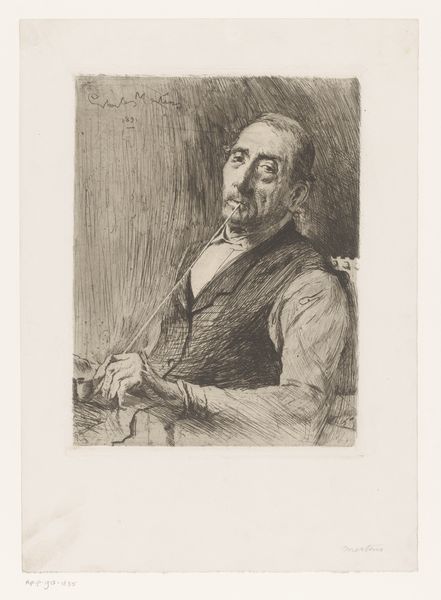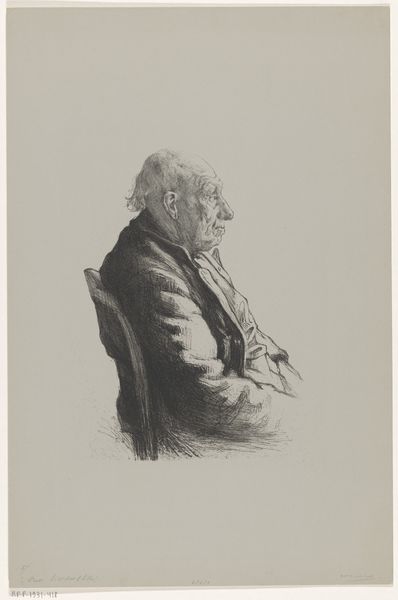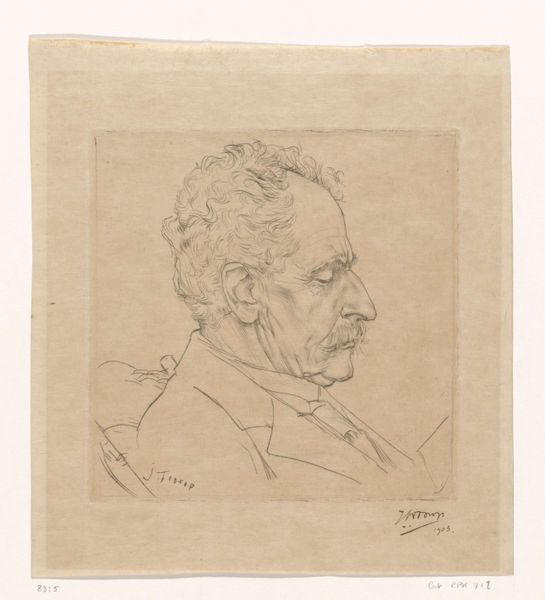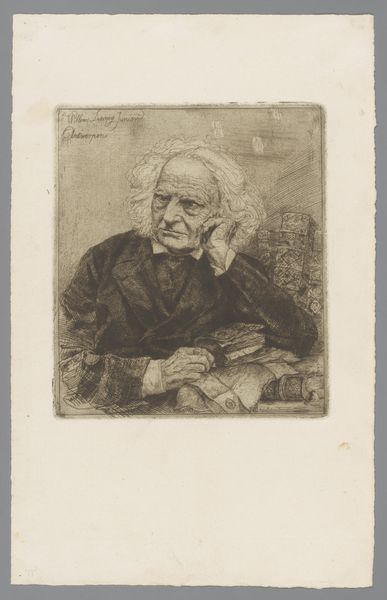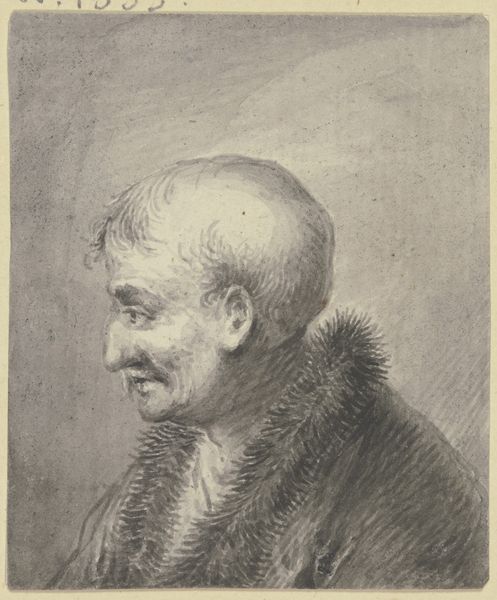
drawing, print, etching, paper
#
portrait
#
drawing
#
art-nouveau
# print
#
etching
#
paper
#
realism
Dimensions: 218 × 148 mm (image); 237 × 155 mm (plate); 324 × 230 mm (sheet)
Copyright: Public Domain
Curator: Up next, we have "S. Loeb," an etching done in 1897 by Anders Zorn. It's currently housed here at The Art Institute of Chicago. Editor: Immediately striking—the dramatic use of chiaroscuro. That dark coat almost swallows the figure, but his face emerges with striking clarity. It really anchors the composition. Curator: Indeed. Zorn was a master of etching. He captures not only the likeness but also the sitter's character through a careful modulation of line and tone. It is also quite a period piece. One can almost imagine this piece as the emblem of a prominent merchant or thinker from that time. Editor: Absolutely, and the expressive lines create such a strong texture. Look how he renders the fur collar with such detail, using individual strokes to suggest depth and softness. It contrasts so effectively with the smoother areas of his face. Curator: That tactile quality is a hallmark of Zorn’s printmaking, contributing to the realism the artist so effectively portrayed in the late nineteenth century. His involvement with realism is certainly not to be taken lightly as the Realism art movement marked an increasing secularization of European culture. Editor: It’s curious that despite all the intricate detail on the man’s jacket and the shading on the subject’s face, the area above the head fades to light and seems more impressionistic in quality. I suppose there is a reason this work is considered as Art Nouveau? Curator: Yes, Zorn moved freely between genres and styles and the turn of the century certainly shows us the flexibility afforded to the artists who came from a realism or impressionistic background. What seems especially key is that through various aesthetic devices, Zorn was able to translate what otherwise could be considered "commercial art", given the role portraiture often played at this time, to fine art. Editor: So, despite the intimate nature of the portrait itself, the work engages the viewer through strong visual tensions, that also help to define what early Realism eventually metamorphosed into as a more codified style of art. Curator: Exactly. In the social milieu, art transitioned towards expressing individual perspective within rapidly changing social and aesthetic expectations, of which Zorn so skillfully represents through this etching. Editor: Yes. Overall, “S. Loeb” seems a beautiful encapsulation of aesthetic transition through technique, texture, and line that still continues to resonate with audiences to this day.
Comments
No comments
Be the first to comment and join the conversation on the ultimate creative platform.
